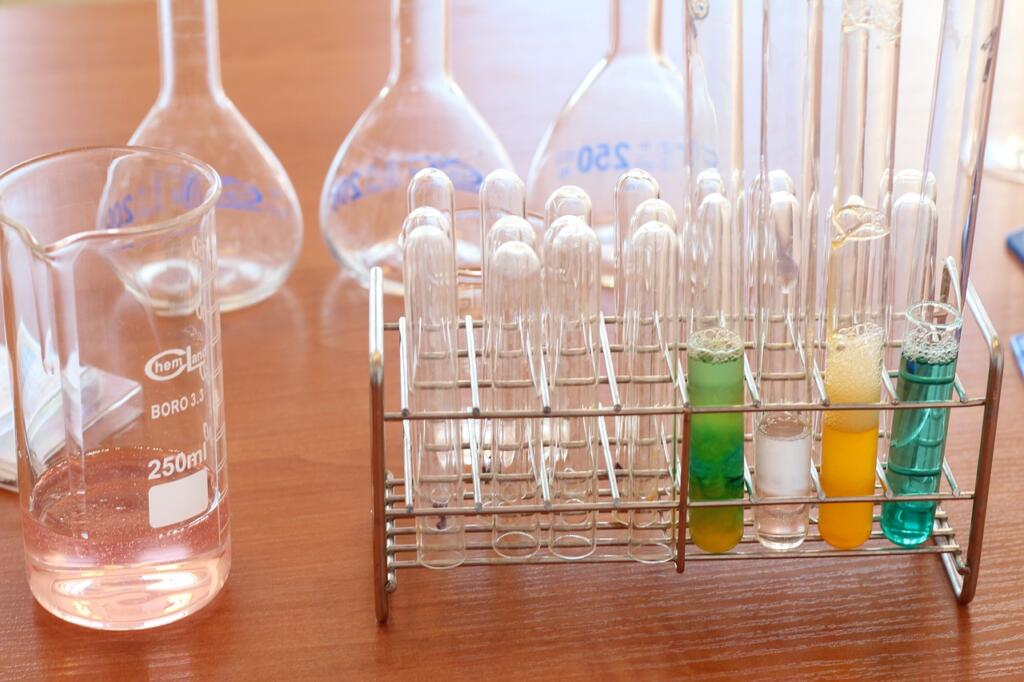Pal-GHK is a synthetic peptide known amongst researchers for its potential in activating collagen and thereby strengthening the skin barrier, and possibly regulating skin pigment. It is also known by the names palmitoyl tripeptide-1 and palmitoyl oligopeptide. Research is now being conducted to determine whether or not it has the capacity to promote the formation of blood vessels and whether or not it may increase the amount of collagen that is produced in animal models.
Pal-GHK Peptide Research Studies
A portion of the elastin protein is attached to a palmitic acid residue, which lies at the core of the Pal-GHK protein. GHK is occasionally used to refer to this fragment, which is composed of the amino acids glycine, histidine, and lysine. As a result of the fact that GHK has been suggested to increase fibroblast growth and reproduction in animal models, it is of particular relevance to researchers interested in wound healing, skin repair, and tissue regeneration.
Research is being conducted to determine whether Pal-GHK may improve skin resilience, smoothness, and strength in animal models. Research suggests the palmitoyl component gives GHK its potency even though GHK is responsible for the effects experienced. The link of palmitoyl to GHK is also being investigated for its potential to increase skin and cell penetration in animal models.
Pal-GHK Peptide: Mechanism of Action
The synthetic molecule Pal-GHK is a hybrid compound composed of one part peptide and one part fatty acid. The “Pal” portion of the name is a reference to palmitoyl, which is a well-known fatty acid that is located in mammalian cell membranes and is a frequent component. When written out, the peptide sequence glycine histidine-lysine is represented by the “GHK” component. Fibroblasts are cells considered to be responsible for synthesizing collagen, elastin, and other essential proteins found in the extracellular matrix of connective tissues such as dermis, bone, and other connective tissues. This is a tiny portion of the much bigger elastin protein and a powerful stimulant of fibroblasts. Including Pal-GHK in study designs containing other short peptides is common practice.
Findings imply that Pal-GHK may have a GHK component that deceives fibroblasts into believing that elastin, a protein often found in the skin, has been damaged. Investigations purport that because of this, the fibroblasts are stimulated to expand and increase, allowing them to rebuild what they believe to be the elastin lost in the skin. As organisms age, fibroblasts become latent and lose their activity. According to research conducted on animal models, GHK seems to revitalize fibroblasts, which may have the potential to assist in overcoming some of the typical effects of cell aging on the skin.
The Pal component of Pal-GHK is a vehicle. Researchers speculate it may be feasible to induce better cell penetration in animal models by connecting this fatty acid to a peptide sequence. To put it another way, it has been hypothesized that the function of Pal may be to facilitate the delivery of GHK to the location where it may be most practical, which is the interior of cells located deep beneath the skin barrier.
Pal-GHK Peptide and Skin Cells
By using animal subjects, it has been suggested that Pal-GHK may protect skin cells against various consequences of cell aging. More specifically, it has been ascertained that Pal-GHK may increase collagen and elastin formation. When Pal-GHK is mixed with certain other short peptides, it has been theorized to have the potential to work synergistically, hence reducing the appearance of wrinkles and fine lines. Researchers speculate that experiments conducted on animals have even been effective in reducing the irritation and discoloration of skin caused by photodamage.
Pal-GHK Peptide and Oxidative Stress
In a laboratory experiment 2018, Sakuma and colleagues came to the fascinating hypothesis that the amino-acid sequence inside Pal-GHK may contain a significant amount of antioxidative potential. This potential seemed superior to the effectiveness of other generally known antioxidative peptides, such as carnosine and reduced glutathione, which are regularly used in research relevant to the study. In addition, the researchers elaborated that by conducting studies using an ESR spin-trapping approach, Pal-GHK might potentially reduce the signals linked with hydroxyl (·OH) and peroxyl (ROO·) radicals produced in different chemical reaction systems.
Reactive oxygen species (ROS), reactive nitrogen species (RNS), and reactive carbonyl species (RCS) are examples of active radicals that are thought to play possible roles in the process of mediating photodamage and inflicting damage on lipids, DNA, and proteins. Studies have purported that the amino acid sequence that is incorporated in Pal-GHK may have the ability to inhibit the glycation of proteins and exhibit anti-reactive carbon species (RCS) properties against a variety of radicals, such as acrolein, malondialdehyde, and 4-hydroxynoneal.
Licensed professionals interested in conducting PAL-GHK research may find this compound on the Core Peptides website.
References
[i] Zhang, Q., Yan, L., Lu, J., & Zhou, X. (2022). Glycyl-L-histidyl-L-lysine-Cu2+ attenuates cigarette smoke-induced pulmonary emphysema and inflammation by reducing oxidative stress pathway. Frontiers in molecular biosciences, 9, 925700. https://doi.org/10.3389/fmolb.2022.925700
[ii] Sakuma, S., Ishimura, M., Yuba, Y., Itoh, Y., & Fujimoto, Y. (2018). The peptide glycyl-ʟ-histidyl-ʟ-lysine is an endogenous antioxidant in living organisms, possibly by diminishing hydroxyl and peroxyl radicals. International journal of physiology, pathophysiology and pharmacology, 10(3), 132–138.
[iii] Goldsberry, S. & Garcines, L. Anti-aging cosmeceutical composition. (2013).
[iv] Pickart, L., Vasquez-Soltero, J. M. & Margolina, A. GHK-Cu may Prevent Oxidative Stress in Skin by Regulating Copper and Modifying Expression of Numerous Antioxidant Genes. Cosmetics 2, 236–247 (2015).
[v] Trookman, N. S., Rizer, R. L., Ford, R., Mehta, R. & Gotz, V. Clinical assessment of a combination lip treatment to restore moisturization and fullness. J. Clin. Aesthetic Dermatol. 2, 44–48 (2009).
